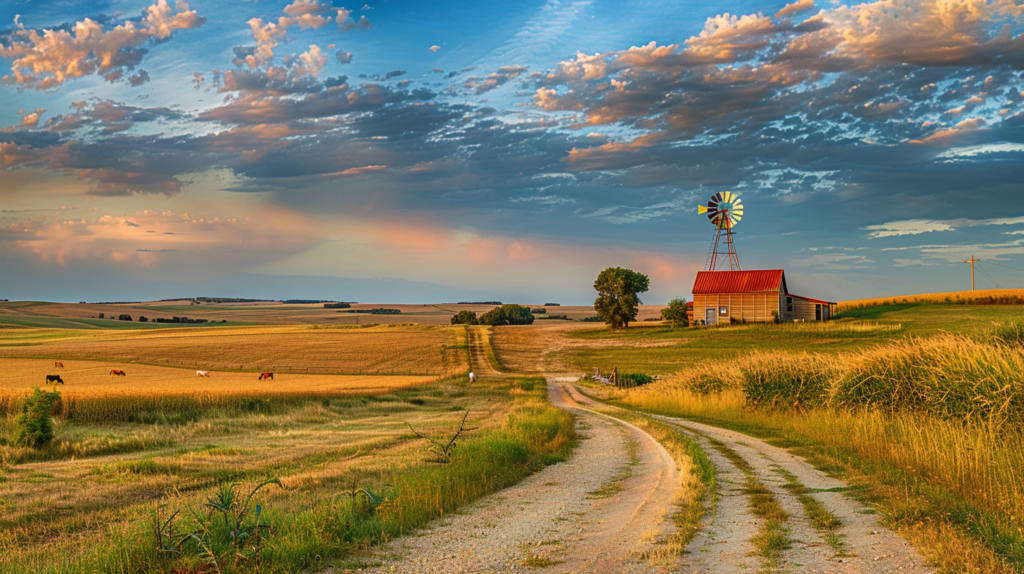
Iowa:
- First-in-the-Nation Caucus: While not a primary, Iowa’s presidential caucus is the first major contest in the presidential nominating process. The caucus structure forces candidates to engage in a more retail level of campaigning.
- Emphasis on Retail Politics: Candidates often spend a great deal of time in Iowa meeting with voters in small groups, at town halls and at public events. This retail-style politics emphasizes direct engagement with voters, and encourages citizen participation in the political process.
- Active Civic Culture: Iowa has a tradition of community engagement, and people tend to be involved in local issues. This citizen participation and local level focus give it some similarities to the New Hampshire model.

Nebraska’s Unique Electoral Vote Allocation System:
Unlike the “winner-take-all” system used by most states, Nebraska, along with Maine, uses a district system to allocate its electoral votes in presidential elections. This means:
- Two Statewide Electoral Votes: Two of Nebraska’s electoral votes are awarded to the candidate who wins the popular vote statewide.
- One Electoral Vote Per Congressional District: The remaining electoral votes (one for each of Nebraska’s three congressional districts) are awarded to the candidate who wins the popular vote within each individual district.
Why is This System Unique and Important?
- Potential for Split Electoral Votes: This system creates the possibility of Nebraska splitting its electoral votes between presidential candidates. A candidate might win the statewide popular vote and the two corresponding electoral votes, while another candidate might win one or two congressional districts, earning the corresponding electoral votes.
- Emphasis on District-Level Competition: This system places more emphasis on district-level competition, making individual districts more significant in the presidential election process. Candidates may be compelled to focus on individual districts, which can give voice to localized political preferences.
- More Representative (Potentially): The system is designed to be more representative of the diversity of the state. It allows for the possibility that different parts of the state can vote differently, reflecting unique political views that might otherwise be overlooked in a statewide popular vote.
- Historical Impact: Though it rarely happens, Nebraska has split its electoral votes before. In 2008, Barack Obama won the 2nd congressional district (Omaha and its suburbs), earning one electoral vote, while John McCain won the statewide vote and two other districts. This shows how a congressional district can be decisive.
- Encourages Campaigning in Specific Areas: Candidates are encouraged to campaign in areas that are close to being competitive, thus possibly making some more localized political issues a focal point in campaigns.
The Implications of Nebraska’s Congressional Districts:
- Geographic and Demographic Diversity: Nebraska’s congressional districts are drawn to capture the demographic and geographic diversity of the state, creating districts that are somewhat distinct in terms of social issues and political views.
- Political Battlegrounds: While the 1st and 3rd districts are typically more Republican-leaning, the 2nd district (Omaha) is often more competitive and can swing either way in elections, often mirroring larger political trends across the US.
- Focus on Local Issues: Because the congressional districts are smaller than the entire state, the issues that dominate political debate are often focused on the local communities within the district.
- Grassroots Campaigns: Candidates must engage in more localized grassroots campaigning within each district, appealing to specific voters and addressing the issues specific to their area.
- Unique Voice Within the Midwest: The system distinguishes Nebraska within the Midwest, and it shows how different states can prioritize different ways of engaging voters.
Why This Connects to a “Grassroots” Theme:
- Focus on District-Level Politics: The district-based system emphasizes the importance of district-level politics and encourages candidate engagement at the local level.
- Diverse Perspectives: The potential for split electoral votes makes it more likely that diverse political perspectives in the state are represented in the presidential election results.
- Candidate Responsiveness: Candidates are motivated to be responsive to the concerns of the voters in each of the individual districts, because district-based support is important.
- Empowerment of Local Communities: The importance of individual districts empowers local communities by increasing their relevance in national elections.
Conclusion:
Nebraska’s unique system of allocating electoral votes by congressional districts adds a distinct layer to the state’s political system. It’s a unique approach that can make its congressional districts very important in a presidential election, and it emphasizes grassroots campaigning and local engagement. It makes Nebraska different compared to the majority of states and enhances its significance within the political landscape of the Midwest. It illustrates another way in which the state fosters citizen input within its particular political framework. It’s a great example of how a state can use a different mechanism to ensure a more diverse representation of its population.

Ohio:
- Manufacturing Heritage: Ohio has a long history of manufacturing, particularly in automotive, aerospace, and heavy machinery. While the industry has changed, manufacturing remains a significant part of the state’s economy.
- Political Bellwether: Ohio is a perennial swing state and is often seen as a bellwether for national elections. Its diverse population and geographic position make it a crucial battleground for both Democrats and Republicans.
- Research & Development: Ohio has a strong presence in research and development, particularly in medical, aerospace, and automotive technologies.
- Agricultural Strength: While not as large as some other Midwestern states, Ohio has a significant agricultural sector, particularly in the southern part of the state, with diverse farm products.
- Population: Ohio is another one of the most populous states in the Midwest, and its voters play a huge role in national elections.